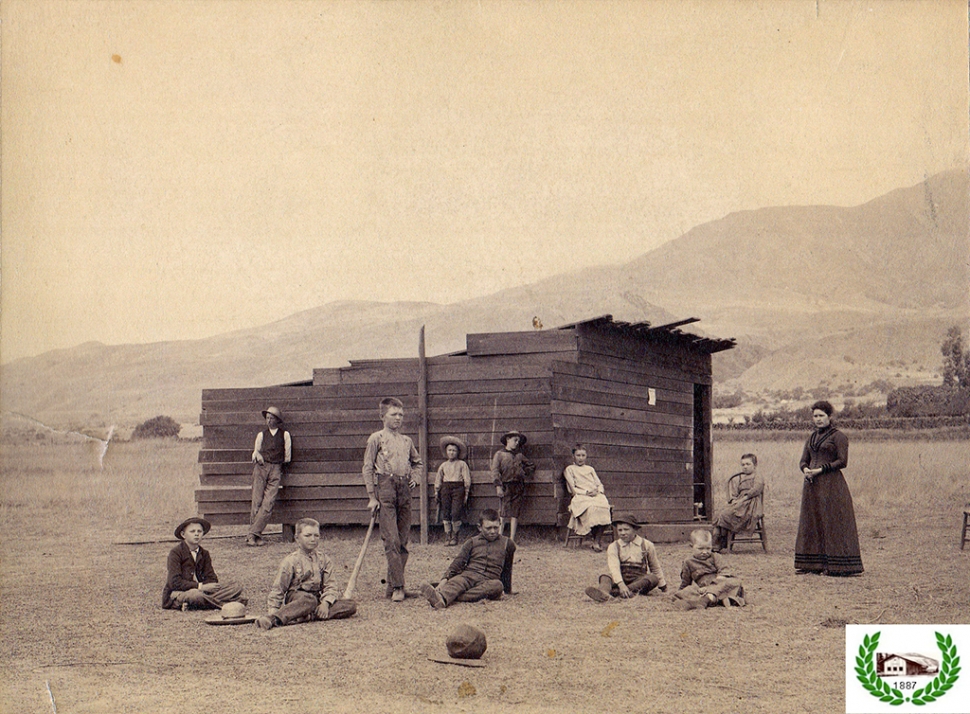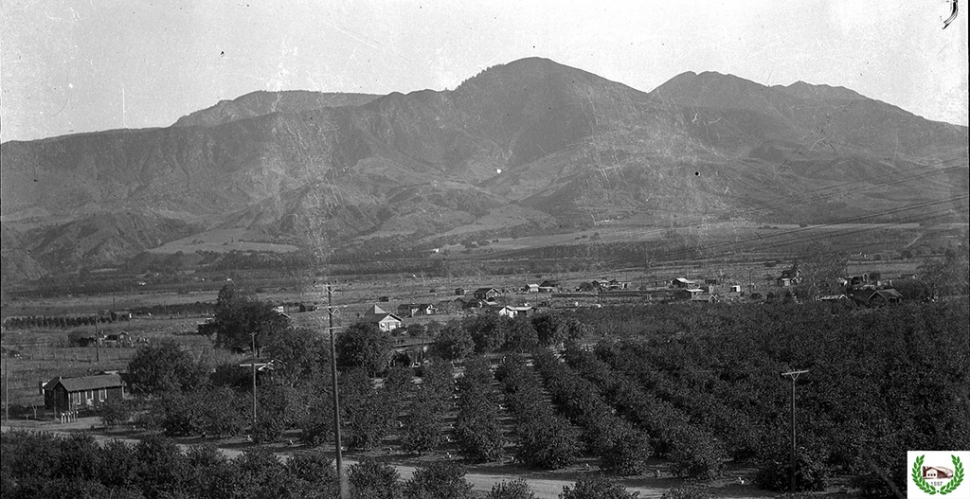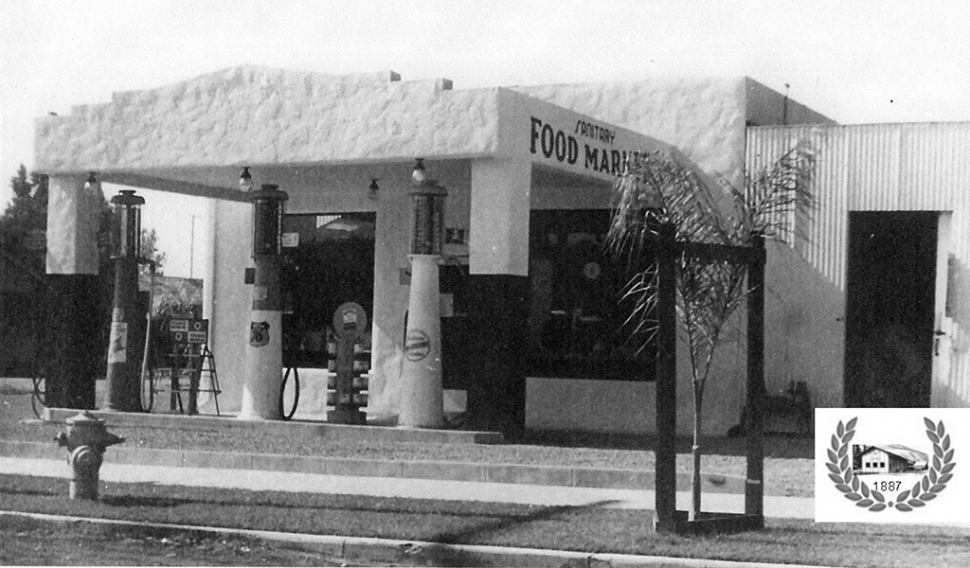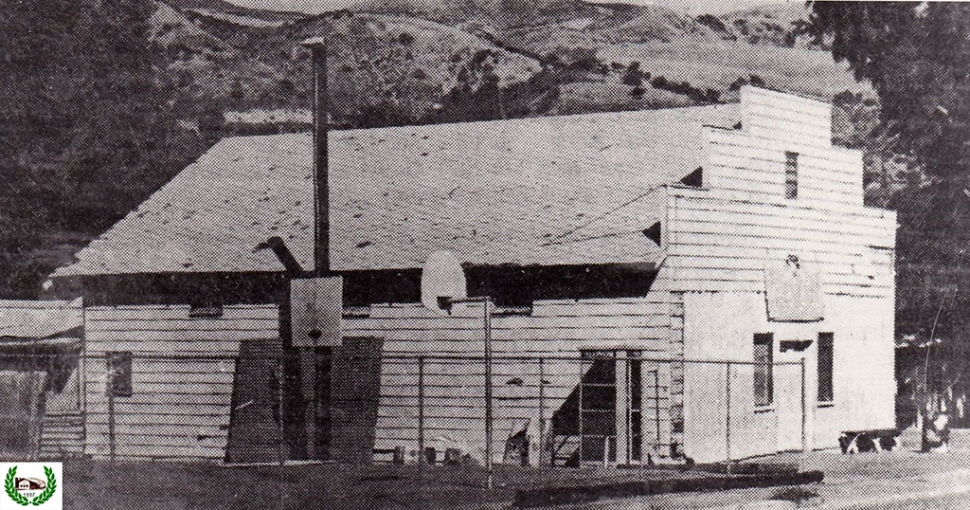|
Tipperary
 The Cactus Patch School, circa 1879. As best as can be determined, this school was near the Candelaria Lane cul-de-sac, close to the river. Photos courtesy Fillmore History Museum. By Gazette Staff Writers — Wednesday, November 3rd, 2021
 Early North Fillmore Homes and Orchards.  Sanitary Food Market 801 A Street in 1937.  Chaneys Trading Post 801 4th Street circa 1947. Courtesy Fillmore History Museum When the Fillmore Centennial Book was published in 1988 it devoted just one paragraph in the “Outlaying Areas” story to Tipperary. But it deserves a little more. You know the area today simply as North Fillmore but in the early part of the 20th century it was most often referred to as Tipperary.The location was part of the original Rancho Sespe which had been purchased from Mattie Mae Storke by the Sespe Land and Water Co. The history of the name is lost to time. However, former postmaster Joel Schwartz noted in his written reminiscences that this was Fillmore’s first subdivision and was nicknamed Tipperary by the residents. Perhaps it was because many of the early settlers there were Irish. One of the earliest problems in that area was a lack of water supply and its poor quality. Joel wrote a letter on behalf of the residents to Sacramento. Soon a representative of the California government arrived unannounced on the train to solve the problem. He was under the impression that Tipperary was a large apartment house called Tipperary Flats. He soon realized that Tipperary was simply a small local community. In any event, he soon solved the problem for the residents and departed by train back to Sacramento. Can you imagine such service by a state government today? North Fillmore is an area semidetached from Fillmore. It snuggles below the bluff where the high school athletic fields are located and stretches to the Sespe River on the west side. On the north, it ends where Goodenough Road rises up the hill and continues on to Condor country. On the south side North Fillmore is bounded by the railroad track. In the beginning it was home to orchards and a few scattered farm homes. It was also the location the 1879 Cactus Patch School. As best we can determine, this school was near the Candelaria Lane cul-de-sac very close to the river. In time North Fillmore became home to newcomers looking for lower cost lodgings. Many of these newcomers were refugees from the disastrous dustbowl period between 1930 and 1940. During the ten years of the Dustbowl about 3.5 million people left the Great Plains many of them moving to California and settling in places like Fillmore. There were also immigrants of Mexican descent looking fora community with an affordable place to call home. In addition to the homes there were churches, businesses and industry. It was home to the Mutual Orange Distributers (MOD) packing house which drew many of its employees from the area. That modernized plant still operates today as the Villa Park packing house. One of the primary businesses was the Hydrosulphosol plant located on 4th street. Hydrosulphosol was an effective “over the counter” burn ointment which was manufactured between 1946 and 1971. The product came to the notice of Elizabeth and Oliver Lientz whentheir daughter Betty suffered an eye injuryand the medication saved her eyesight. It was also used to great results during WWII to treat burns. Elizabeth and Oliver contacted the developer of the formula and then formed a company to produce and market the product. Eventually, daughter Betty took over the management of the company. At one point the product was also used by NASA for treatment of mild burns. But soon the FDA came calling and the product which had been used for years for treatment was removed from the market. The results of testing of the product can still be found on the internet. And, in all probability, old time residents of Fillmore still have a jar or two of the product in their medicine cabinets. In its heyday, there were three grocery stores serving the community, all located within a few blocks of each otherand all within walking distance of the homes. These were Chaney’s Trading Post on the corner of 4th and B St., the Sanitary Food Market at801 A St. which was first owned by Russell and Allah Day then owned by Delores Day, Fillmore’s first woman Mayor, and her husband, Traver. Finally there was Beaty’s Market at 763 B Street just south of Mountain Vista Elementary School. Two general merchandise stores still remain. “The Arbor” on 3rd St. in North Fillmore was a popular restaurant in the 30s and 40s. But you had to like chicken as it was the only dish on the menu. The Jehovah’s Witnesses Kingdom hall was on Fifth Street with a church built in 1975. The Church of the Nazarene was built in 1939 on Third Street and today it is The Faith Miracle and Revival Center. Today much of the community still provides affordable housing with narrow streets. Butrecently new housing developments and a new modern elementary school have been built between the original community and the river. North Fillmore has always been an important and integral part of the Fillmore community and will continue to grow and change as it meets the needs of its citizens. |
